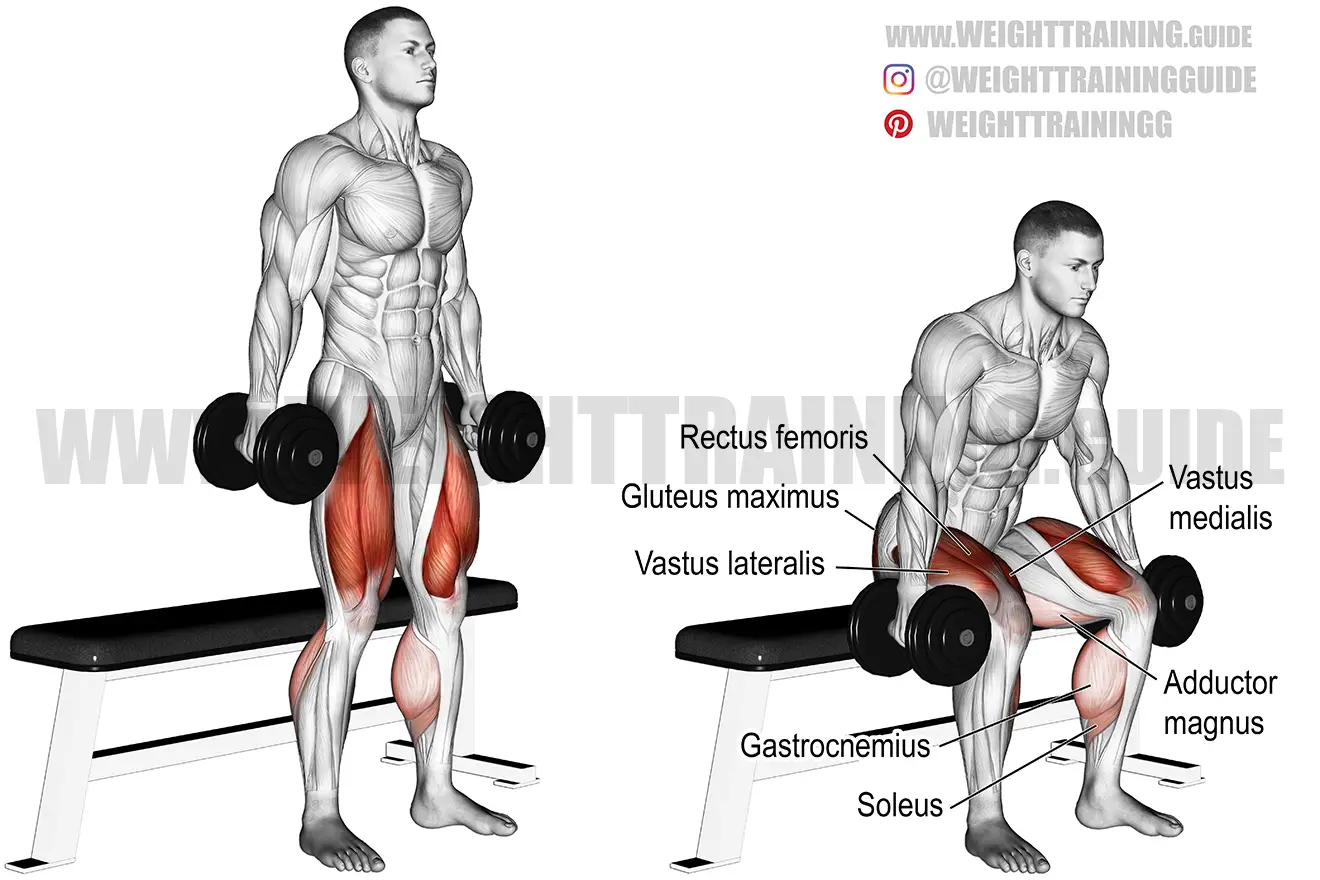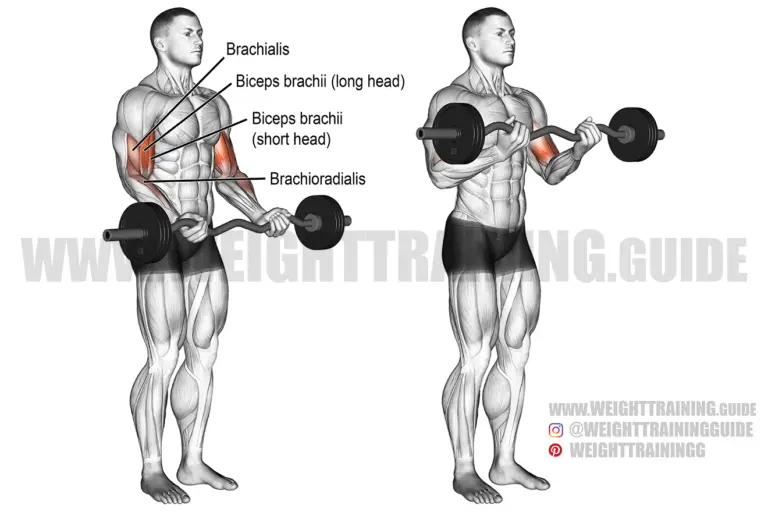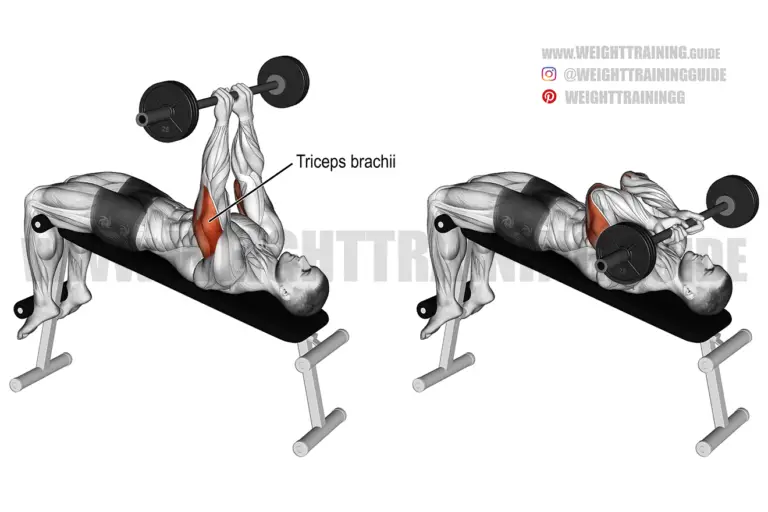Dumbbell box squat
Exercise details
- Target muscles: Quadriceps (Rectus Femoris, Vastus Lateralis, Vastus Medialis, Vastus Intermedius), Gluteus Maximus
- Synergists: Adductor Magnus, Soleus
- Dynamic stabilizers: Hamstrings, Gastrocnemius
- Important stabilizers (not highlighted): Erector Spinae, Upper and Middle Trapezius, Levator Scapulae, Rectus Abdominis, Obliques
- Mechanics: Compound
- Force: Push
Starting position
- Stand in front of a box or bench holding a pair of dumbbells by your sides.
- Spread your feet so that they are positioned a little wider than shoulder width (i.e. wider than with a regular dumbbell squat).
- Point your feet and knees out diagonally in the same direction.
Execution
- Keeping your torso upright, inhale as you slowly squat by first pushing your hips backward and then your knees outward.
- Stop and hold for one second when your butt touches the box. Do not sit on the box and rock backwards.
- Exhale as you spring back upward without rocking forward.
- Repeat for the prescribed number of repetitions.
Comments and tips
- Keep your torso upright, your knees out, your shins vertical, and your feet flat.
- Keep your feet and knees pointing in the same direction.
- Control the movement all the way down to the box or bench. Do not sit down; just pause. Sitting down will lead to spinal compression.
- Drive through your heels when you spring upward, and do not rock forward.
- The purpose of using the box or bench in the dumbbell box squat or in any box squat exercise is to eliminate the ‘stretch reflex’, which occurs at the bottom of the squat and aids in the concentric (ascending) phase of the repetition. Eliminating the stretch reflex makes the exercise more difficult and therefore allows you to overload the squat movement pattern with the use of less weight.
- By eliminating the stretch reflex, this exercise will allow you to improve your squat strength, which will carry over to all of your other squatting exercises.
- As less weight can be used, this exercise is more suitable than other squatting exercises for people with knee problems.
- The dumbbell box squat (or any type of box squat) is not suitable for beginners, who first have to learn how to perform the regular dumbbell and barbell squats.
- The height of the box or bench that you use should allow you to descend until your thighs are at least parallel with the floor.
- One benefit the dumbbell box squat has over the barbell box squat is that you can perform it anywhere with no need for a spotter.
- See also the pistol box squat and the barbell front box squat.
- For other exercises that target the quadriceps, see the dumbbell machine sissy squat, the double kettlebell front squat, the dumbbell overhead squat, and the barbell front squat.
Dumbbell box squat videos
In this first video, the demonstration of the dumbbell box squat is a little poor. The instructor seems to be actually sitting down instead of using the box only to tell him where to pause as he squats.
In this second video, the demonstration of how to use the box is perfect; however, the exercise is a different type of dumbbell box squat, known as the dumbbell goblet box squat.







